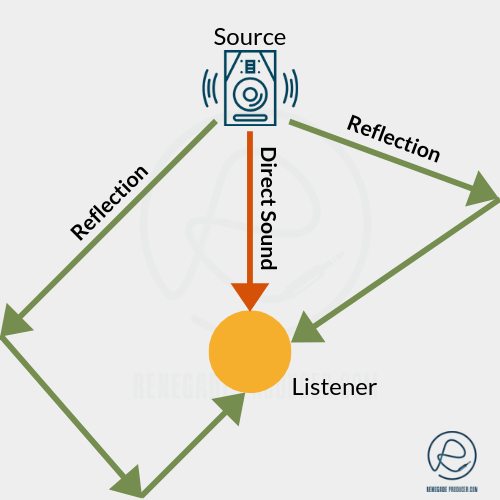Reverb in Music Production: Crafting Sonic Depth and Atmosphere
Reverb is a fundamental element in music production that plays a pivotal role in shaping the sonic landscape of a song. Whether you're working on a delicate acoustic ballad or a roaring rock anthem, understanding and effectively using reverb can add depth, atmosphere, and a sense of space to your music. In this blog post, we'll dive into the world of reverb, exploring its significance, types, and practical tips for using it in your music production endeavors.
The Significance of Reverb in Music
Reverb is essentially the persistence of sound in a space after the sound source has stopped. In other words, it's the sonic reflection and diffusion of sound waves within an environment. In music production, reverb serves several crucial purposes:
Creating a Sense of Space: Reverb can simulate various environments, from intimate rooms to vast concert halls. It helps position instruments and vocals within a virtual space, giving the listener a sense of where the music is taking place.
Adding Depth: Reverb can make a mix feel more three-dimensional by placing sounds in the foreground, mid-ground, or background. This spatial positioning contributes to a richer listening experience.
Enhancing Emotional Impact: The choice of reverb can evoke specific emotions. For instance, a lush, long reverb might create a dreamy, ethereal mood, while a tight, short reverb can add intensity and urgency.
Types of Reverb
In music production, various types of reverb are commonly used, each with its own sonic characteristics. Here are some of the most prevalent types:
Plate Reverb: Plate reverbs use a large metal plate as the reflective surface. They offer a bright, smooth, and lush sound, making them ideal for vocals and lead instruments.
Spring Reverb: Spring reverbs use a coiled spring to generate reverb. They are often found in guitar amplifiers and offer a characteristic boingy sound that can add vintage charm.
Room Reverb: Room reverbs simulate the acoustics of a small room. They are suitable for adding subtle ambiance and can make a mix feel more cohesive.
Hall Reverb: Hall reverbs replicate the acoustics of a concert hall or large space. They provide a sense of grandeur and are commonly used on orchestral recordings.
Convolution Reverb: Convolution reverb uses recorded impulse responses to recreate the exact acoustic properties of real spaces. This results in highly realistic and immersive reverbs.
Spring Reverb
Practical Tips for Using Reverb
Now that we've covered the basics of reverb, here are some practical tips for incorporating it into your music production:
Consider the Song's Genre: Different genres call for different reverb treatments. For instance, electronic music may use more artificial and exaggerated reverbs, while acoustic genres may require subtler, natural-sounding reverbs.
Use Send/Return Busses: Send reverb effects to auxiliary channels (busses) to maintain control and consistency. This allows you to apply the same reverb to multiple tracks and adjust it collectively.
Adjust Decay Time: Experiment with the reverb's decay time to achieve the desired sense of space. Longer decay times create more pronounced reverb, while shorter decay times keep the sound more upfront.
Pre-Delay for Clarity: Adding a slight pre-delay to your reverb can help maintain clarity, especially on vocals and lead instruments. This prevents the reverb from masking the dry sound.
Automation for Dynamics: Automate the reverb's parameters (e.g., wet/dry mix, decay time) to create dynamic changes within your mix. This can add excitement and variation to your music.
Conclusion
Reverb is a powerful tool in music production, allowing you to shape the spatial and emotional qualities of your tracks. Understanding the different types of reverb and how to use them effectively can elevate your music and transport your listeners to new sonic landscapes. Experimentation and careful consideration of your song's context are key to achieving the perfect reverberant balance in your music production journey.




